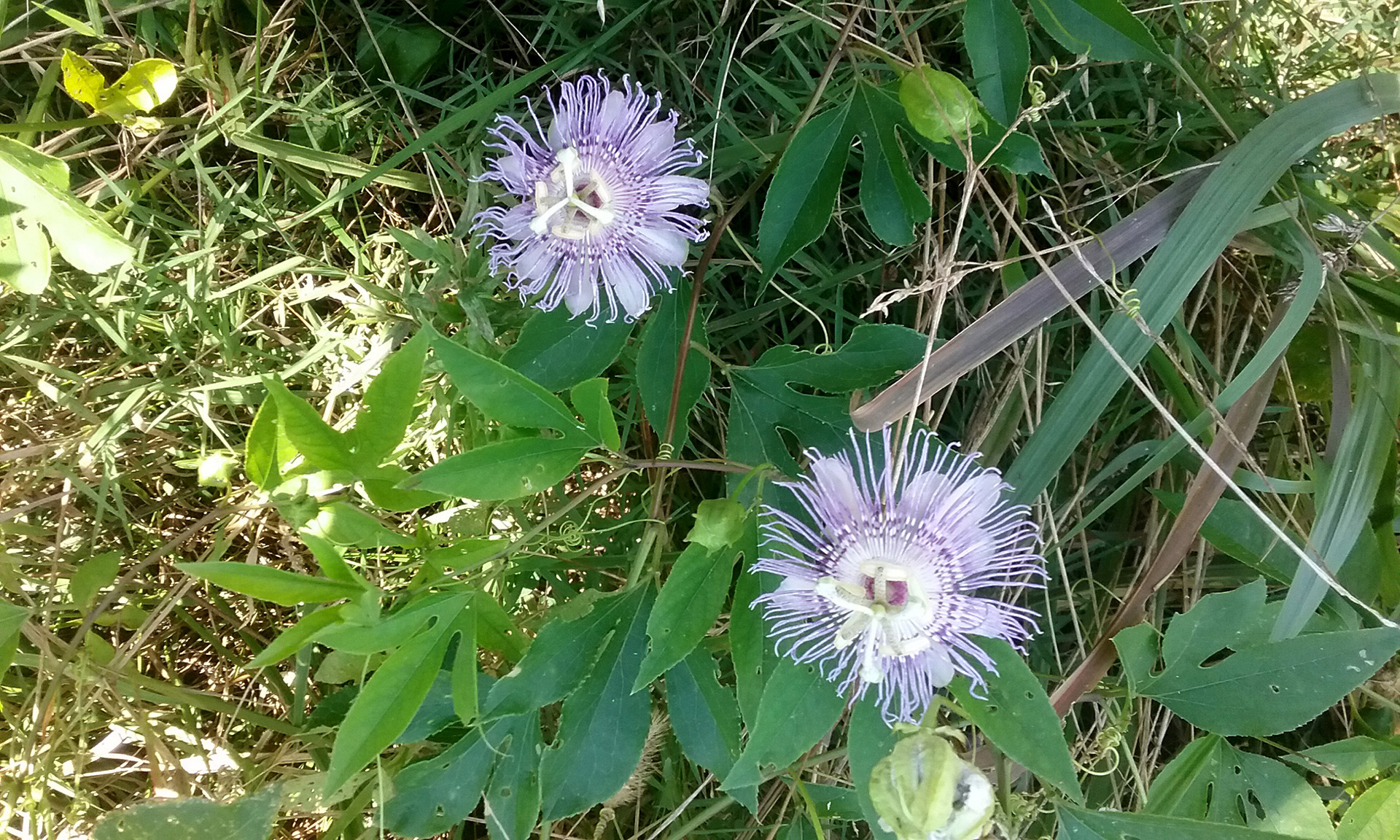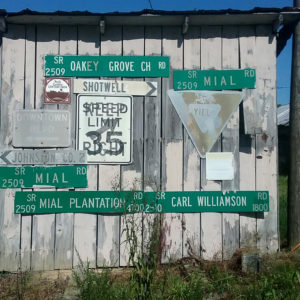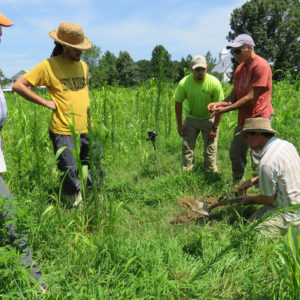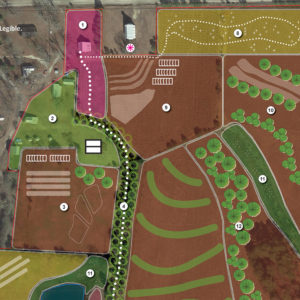Conceptual design helps Triangle Land Conservancy integrate regenerative agriculture, education, historic preservation, and community building with their conservation mission.
Triangle Land Conservancy, Raleigh, NC
The Sarah + Bailey Williamson Preserve at Walnut Hill is a 405‐acre property owned and stewarded by the Triangle Land Conservancy. Once part of a large and prosperous cotton plantation, the land today is a rich mosaic of old fields, woodland, pasture land, ponds, streams, and historic buildings. Triangle Land Conservancy (TLC) has a bold vision for the Preserve, which touches on all aspects of TLC’s mission of safeguarding clean water; protecting natural habitats; supporting local farms and food; connecting people with nature; inspiring community action; and inviting collaborative partnerships.
Project Background
Historically, TLC has focused on establishing public and private nature preserves. An exception to this rule is the J. Logan and Elinor Moore Irvin Nature Preserve, a private preserve where farming and education have successfully been integrated with conservation goals. The precedent of Irvin has informed TLC’s vision for Walnut Hill, with some variations – namely, that Walnut Hill is to be a regenerative agriculture and education hub, open to the public.
In the Summer of 2018, TLC awarded Regenerative Design Group a contract to create an agricultural site plan for Walnut Hill. RDG’s team included Dave Boehnlein–principal and co-founder of Terra Phoenix Design–who provided expertise in site assessment and regenerative farm planning.
Project Initiation: Site Visit + Goals Articulation
The RDG team traveled to North Carolina in early August for an initial site visit. We spent many hours walking the property, recording extensive site observations. Several TLC staff members and key stakeholders joined us, and helped to clarify the programming objectives for Walnut Hill. Back in the studio, we got to work synthesizing land and programmatic goals; digging into key site assessments; and developing concepts. We organized TLC’s agricultural goals into the following categories:
Farm Systems
- Demonstration, innovation, and training
- Establish successful models of sustainable/regenerative agriculture in the southeast
- Integrate livestock, annuals, and perennials
- Offer agricultural educational programming
Historic Landscape + Natural Resources
- Honor the agricultural history of the site
- Restore and utilize historic farm buildings
- Improve health of water + soil
- Increase biodiversity
- Restore habitat
- Integrate with existing + planned Preserve components: e.g.open space, restoration, trails
Production + Distribution
- Integrate on-site processing + distribution
- Include a farmstand/farm store for farm crops and nursery plants
Concept Development
We started with a Whole Farm Concept, which organizes a spectrum of use along the site’s north-to-south axis. Patterns of arrival; access and circulation; buildings, infrastructure, and utilities; field layouts; and special places all suggest a greater diversity and intensity of activities in the north, that gradually decrease in intensity as one moves south toward larger woodlands and conservation lands.
Organizing the site in this way helped to make the considerable programming and agricultural goals more digestible, and can aid with planning priorities as Walnut Hill grows and changes. RDG further developed concepts for the north third, to tease out the implications of focusing on a production farm versus an education farm. All concepts were presented to stakeholders in late September, and were well-received. Many commented on the value of the concept development process in determining feasible projects and timelines.
We hope that the full plan–which included conceptual phasing, guiding principles, and renderings to help with outreach and fundraising efforts–helps to organize the development of Walnut Hill into a hub for regenerative agriculture, education, and community building.
Key Features
- Outdoor Classroom
- Ecological Corridor
- Alley Cropping
- Habitat Restoration
- Silvopasture
- Agroforestry
Services Provided
- Site Analysis
- Stakeholder Meeting Facilitation
- Regenerative Agriculture Concepts
- Integration of Diverse Programming
- Conceptual Phasing
- Renderings
- Outreach Document

“RDG will work closely with TLC and its advisors to complete a comprehensive site plan that strengthens local food and farm production and the ecological function of the land…With these strong partnerships, our goal is to create a preserve that will be a restorative landscape connecting all members of the community to historic, agricultural, and natural resources.”
Fall 2018 edition of Confluence (TLC newsletter)












